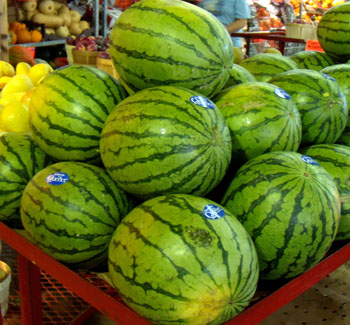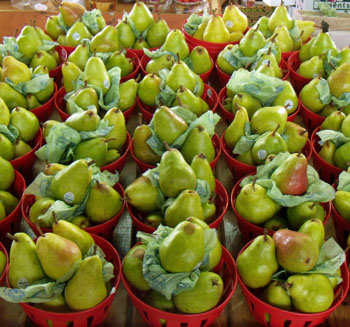
Description
Plum is a common name for certain members of genus Prunus of the rose family, which produce a smooth-skinned, elliptical, heart-shaped, oblong, ovate or round fruit with a flat seed. About 18 plum species are horticulturally important, including the European plum (P. domestica), which probably originated in the Caspian Sea area; Japanese plum (P. salicina), of Chinese origin; cherry plum (P. ceracifera), native to southeast Europe or southwest Asia; and P. nigra and P. americana, of Canadian and American origin respectively.
Production
In North America, plum growing began towards the end of the 18th century. European plums were first brought to the Maritimes by French colonists; Japanese plums were introduced to North America around 1870; and domestication of native species began around 1850. European and Japanese plums are hardy only in milder areas of Canada and are grown commercially in British Columbia, Ontario and Nova Scotia. The native species lack size and quality but hardy hybrids have been developed that have excellent fruit quality and are relatively winter hardy. Most plums produced in Canada are for the fresh market. The main varieties are Bluefre, Bradshaw, Burbank, Early Golden, Italian, Peach, Shiro and Stanley. Common insect pests are red mite, curculio, scale, aphid, maggot and lesser peach tree borer. The main diseases are brown rot, black knot and leaf spot.

 Share on Facebook
Share on Facebook Share on X
Share on X Share by Email
Share by Email Share on Google Classroom
Share on Google Classroom



